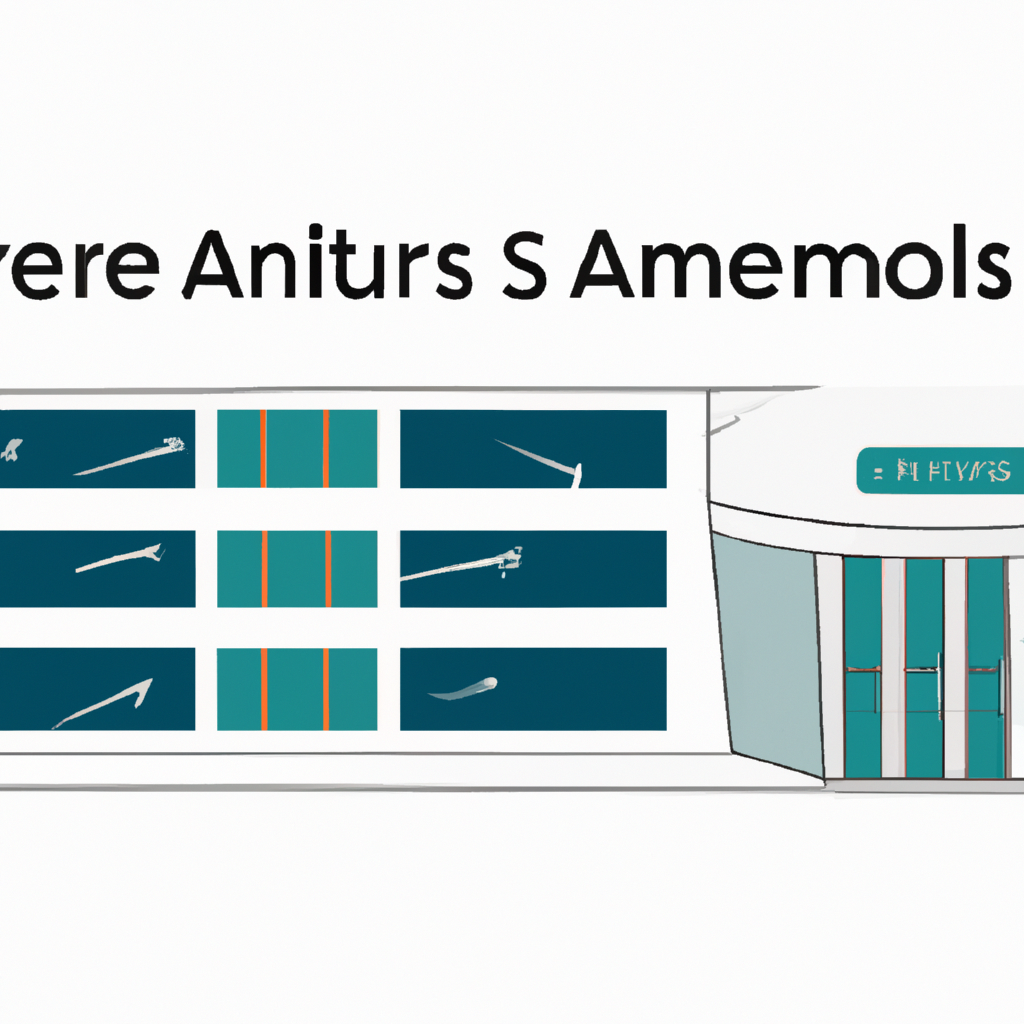Advantages of the Arena Simulation Suite for Complex Systems
The Arena simulation suite is a powerful tool that can be used to model and analyze complex systems. It offers a wide range of advantages for those working with complex systems, making it a popular choice among researchers and professionals in various fields.
One of the main advantages of the Arena simulation suite is its ability to accurately model complex systems. It allows users to create detailed models of real-world systems, including their processes, resources, and interactions. This level of detail enables users to gain a deep understanding of how the system works and how different factors can affect its performance.
Another advantage of the Arena simulation suite is its flexibility. It provides users with a wide range of modeling options, allowing them to customize their models to suit their specific needs. Users can easily modify the parameters of their models, such as the number of resources or the processing times, to simulate different scenarios and analyze their impact on the system. This flexibility makes the Arena simulation suite a valuable tool for decision-making and optimization.
The Arena simulation suite also offers a user-friendly interface, which makes it accessible to users with varying levels of technical expertise. The software provides a visual representation of the system being modeled, making it easier for users to understand and interpret the results. Additionally, the Arena simulation suite offers a range of built-in analysis tools, such as statistical analysis and optimization algorithms, which can help users make sense of the data generated by their models.
Furthermore, the Arena simulation suite supports the integration of real-time data, allowing users to incorporate real-world information into their models. This feature is particularly useful for those working with dynamic systems that are subject to changes over time. By incorporating real-time data, users can create more accurate models and make more informed decisions.
Despite its many advantages, the Arena simulation suite also has some limitations that users should be aware of. One limitation is the steep learning curve associated with the software. While the user-friendly interface makes it easier for beginners to get started, mastering the more advanced features of the Arena simulation suite can take time and effort. Users may need to invest in training or seek assistance from experienced users to fully utilize the software’s capabilities.
Another limitation of the Arena simulation suite is its computational requirements. Modeling and analyzing complex systems can be computationally intensive, especially when dealing with large-scale systems or simulating long time periods. Users may need access to powerful computers or high-performance computing resources to run their simulations efficiently.
In conclusion, the Arena simulation suite offers numerous advantages for those working with complex systems. Its ability to accurately model complex systems, flexibility, user-friendly interface, and support for real-time data integration make it a valuable tool for researchers and professionals. However, users should be aware of the software’s learning curve and computational requirements. Overall, the Arena simulation suite is a powerful tool that can greatly enhance the understanding and analysis of complex systems.
Disadvantages of the Arena Simulation Suite for Complex Systems

Disadvantages of the Arena Simulation Suite for Complex Systems
While the Arena simulation suite offers numerous benefits for modeling and analyzing complex systems, it is not without its drawbacks. Understanding these disadvantages is crucial for decision-makers considering the implementation of this software in their organizations.
One of the main disadvantages of the Arena simulation suite is its steep learning curve. Due to its complexity and extensive features, mastering the software can be time-consuming and challenging. Users need to invest significant effort in understanding the various modules, functions, and modeling techniques to effectively utilize the software. This learning curve can be a deterrent for organizations with limited resources or tight deadlines, as it may require additional training or hiring of specialized personnel.
Another drawback of the Arena simulation suite is its high cost. The software is not cheap, and the licensing fees can be a significant investment for organizations, especially smaller ones. Additionally, the cost of maintaining and upgrading the software can add up over time. This financial burden may make it inaccessible for some organizations, limiting their ability to leverage the benefits of simulation modeling for complex systems.
Furthermore, the Arena simulation suite may not be suitable for all types of complex systems. While it excels in modeling discrete event systems, it may not be as effective for continuous or hybrid systems. This limitation can restrict its applicability in certain industries or domains where continuous processes are prevalent. Organizations operating in such contexts may need to explore alternative simulation software that better aligns with their specific needs.
Another disadvantage of the Arena simulation suite is its reliance on assumptions and simplifications. Like any simulation software, Arena requires users to make assumptions about the system being modeled. These assumptions can introduce biases and inaccuracies into the simulation results, potentially leading to flawed decision-making. Additionally, the software often requires simplifications to make the modeling process more manageable. While these simplifications can be necessary, they may oversimplify the complexity of real-world systems, limiting the accuracy and reliability of the simulation outcomes.
Moreover, the Arena simulation suite may not be suitable for real-time or dynamic simulations. The software is primarily designed for static modeling and analysis, making it less suitable for scenarios that require real-time decision-making or dynamic system behavior. Organizations that require real-time simulation capabilities may need to explore other software options that better cater to their specific needs.
Lastly, the Arena simulation suite may lack advanced optimization capabilities. While it offers basic optimization features, it may not be as robust as dedicated optimization software. This limitation can be a drawback for organizations that heavily rely on optimization techniques to improve system performance and efficiency. In such cases, organizations may need to integrate the Arena simulation suite with other optimization tools or consider alternative software solutions.
In conclusion, while the Arena simulation suite offers numerous benefits for modeling and analyzing complex systems, it is important to consider its disadvantages as well. The steep learning curve, high cost, limited applicability, reliance on assumptions and simplifications, lack of real-time capabilities, and limited optimization features are all factors that decision-makers should take into account when evaluating the suitability of this software for their organizations. By carefully weighing these disadvantages against the potential benefits, organizations can make informed decisions about whether to adopt the Arena simulation suite or explore alternative solutions.
Key Features and Applications of the Arena Simulation Suite for Complex Systems
The Arena simulation suite is a powerful tool that is widely used for modeling and analyzing complex systems. It offers a range of key features and applications that make it a valuable asset for businesses and organizations. However, like any software, it also has its pros and cons that need to be considered.
One of the key features of the Arena simulation suite is its ability to model and simulate complex systems. It allows users to create detailed models of real-world systems, including manufacturing processes, supply chains, and service operations. This enables businesses to gain a better understanding of how their systems work and identify areas for improvement.
Another important feature of the Arena simulation suite is its flexibility. It offers a wide range of modeling and analysis tools that can be customized to suit the specific needs of different industries and organizations. This allows users to create simulations that accurately reflect the unique characteristics of their systems.
The Arena simulation suite also provides users with the ability to experiment with different scenarios and make informed decisions. It allows users to test various strategies and evaluate their impact on system performance. This can be particularly useful for businesses that are looking to optimize their operations or introduce new processes.
Furthermore, the Arena simulation suite offers a user-friendly interface that makes it easy for users to create and run simulations. It provides a range of pre-built templates and libraries that can be used as a starting point for modeling different types of systems. This can save users time and effort, especially if they are new to simulation modeling.
However, despite its many advantages, the Arena simulation suite also has some drawbacks. One of the main cons is its cost. The software can be quite expensive, especially for small businesses or individuals. This can make it inaccessible for those who have limited budgets or resources.
Another potential drawback of the Arena simulation suite is its learning curve. While the software is user-friendly, it still requires some level of expertise to effectively use all of its features. This means that users may need to invest time and effort in learning how to use the software properly.
Additionally, the Arena simulation suite may not be suitable for all types of systems. It is primarily designed for modeling and analyzing discrete event systems, which are characterized by a sequence of events that occur over time. This means that it may not be the best choice for businesses or organizations that deal with continuous processes.
In conclusion, the Arena simulation suite offers a range of key features and applications that make it a valuable tool for modeling and analyzing complex systems. Its ability to accurately model real-world systems, flexibility, and decision-making capabilities make it a popular choice for businesses and organizations. However, its cost, learning curve, and limited suitability for certain types of systems are important factors to consider when deciding whether to use the software.



